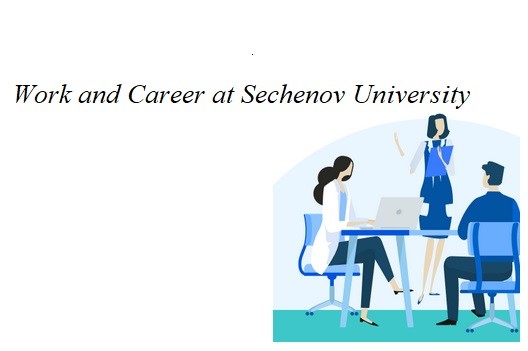- Абитуриенту
-
Обучающемуся
- Я – профессионал
- Локальные нормативные акты
- Образовательные программы
- Стоимость обучения
- Университет - обучающемуся
- Центр карьеры
- Учебный центр по маркировке
- Учеба и наука
- Школы мастерства
- Комфортная среда обучения
- Образовательные стандарты
- Стипендии и материальная поддержка
- Вакантные места
- Общежития
- Сотруднику
- Аккредитация специалистов
-
About University
- Mission & Brand Strategy
- University Leadership
- Rector's Welcome
- History
- Regulatory Documents
- Contacts
- Staff
- International Recruitment
- Partners
Applicants- Why Sechenov University
- Degree Programmes in English
- Preparatory Courses
- Non-Degree Programmes
- Transfer from other Institutions
25.03.2022Insomnia: CBT treatment through mobile app
 Sechenov University specialists have developed a digital platform for the treatment of insomnia using cognitive behavioural therapy (CBT). The method facilitates sleep normalisation with the help of telemedicine.
Sechenov University specialists have developed a digital platform for the treatment of insomnia using cognitive behavioural therapy (CBT). The method facilitates sleep normalisation with the help of telemedicine.
The need for daily sleep is outlined at the genetic level, amounting to 7–9 hours of sleep per day. Information overload and stress disturb sleep and often lead to insomnia. The condition affects around 10% of the world’s population, and almost 25% among those who have recovered from COVID-19.
“You may not have problems with your sleep for years, but due to significant stress or exciting events, a biological programme is launched causing the development of insomnia,” says Mikhail Poluektov, Head of the Sleep Medicine Department at Sechenov University. “Even after the stressor wears off, 10% of the people still have insomnia because they ‘do not let themselves forget’ about it by continuing to worry about their sleep.”
Scientists at Sechenov University have developed a new CBT method for insomnia. It consists of 6–8 weekly sessions aimed at developing healthy sleep habits in patients. So far, 78 people have already taken part in this programme, and 110 more are expected to be recruited in near future. Somnologists say that during therapy, the so-called “dysfunctional beliefs”, such as “I can’t sleep”, gradually disappear and normal sleep is restored.
According to statistics, 70% of the people who have completed this programme sleep normally without medications. The effect persists also after the end of therapy.
Sleep normalisation is assisted remotely via a mobile app. The patient enters data about their sleep before treatment and during therapy. This information is available to the attending doctor, who may correct the treatment process if necessary.
“The remote format of CBT for insomnia treatment is only slightly inferior in effectiveness to the face-to-face mode, but at the same time, telemedicine is more accessible and affordable,” Mikhail Poluektov concludes.
Embed on website
Insomnia: CBT treatment through mobile app
 Sechenov University specialists have developed a digital platform for the treatment of insomnia using cognitive behavioural therapy (CBT). The method facilitates sleep normalisation with the help of telemedicine.
Sechenov University specialists have developed a digital platform for the treatment of insomnia using cognitive behavioural therapy (CBT). The method facilitates sleep normalisation with the help of telemedicine.
The need for daily sleep is outlined at the genetic level, amounting to 7–9 hours of sleep per day. Information overload and stress disturb sleep and often lead to insomnia. The condition affects around 10% of the world’s population, and almost 25% among those who have recovered from COVID-19.
“You may not have problems with your sleep for years, but due to significant stress or exciting events, a biological programme is launched causing the development of insomnia,” says Mikhail Poluektov, Head of the Sleep Medicine Department at Sechenov University. “Even after the stressor wears off, 10% of the people still have insomnia because they ‘do not let themselves forget’ about it by continuing to worry about their sleep.”
Scientists at Sechenov University have developed a new CBT method for insomnia. It consists of 6–8 weekly sessions aimed at developing healthy sleep habits in patients. So far, 78 people have already taken part in this programme, and 110 more are expected to be recruited in near future. Somnologists say that during therapy, the so-called “dysfunctional beliefs”, such as “I can’t sleep”, gradually disappear and normal sleep is restored.
According to statistics, 70% of the people who have completed this programme sleep normally without medications. The effect persists also after the end of therapy.
Sleep normalisation is assisted remotely via a mobile app. The patient enters data about their sleep before treatment and during therapy. This information is available to the attending doctor, who may correct the treatment process if necessary.
“The remote format of CBT for insomnia treatment is only slightly inferior in effectiveness to the face-to-face mode, but at the same time, telemedicine is more accessible and affordable,” Mikhail Poluektov concludes.



